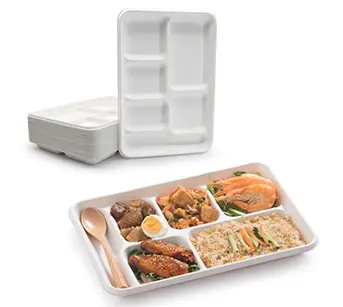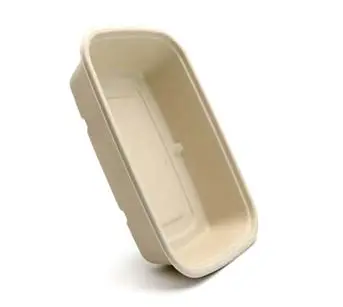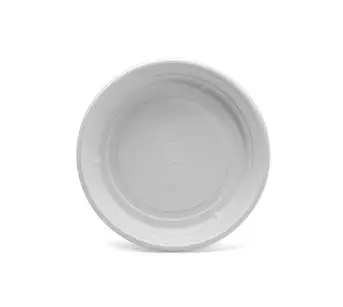Production Process of Compostable Lunch Trays
1. Sourcing of Raw Material
The journey of a compostable lunch tray begins with the gathering of organic raw materials. These materials typically include plant fibers, corn starch, or bagasse (sugar cane pulp).
2. Processing and Molding
These organic raw materials are then processed into a pulp. The pulp is heated and then pressed into molds shaped like trays. This step requires high precision to ensure the trays are uniformly shaped and strong enough for use.
3. Cooling and Packaging
Once the trays are molded, they are allowed to cool and harden. Afterward, they are packed and prepared for shipping to various destinations worldwide.
Practical Usage of Compostable Lunch Trays
1. Food Serving
Compostable lunch trays are an excellent choice for serving food at large gatherings, parties, or events where washing dishes isn't feasible. These trays provide a neat and eco-friendly way to serve meals.
2. School Lunch Programs
These trays are commonly used in school lunch programs. They are safe, convenient, and contribute to environmental education by teaching children the importance of composting and recycling.
3. Outdoor Events
Whether it's a picnic, BBQ, or a camping trip, compostable lunch trays are lightweight, convenient, and perfect for outdoor events. They also leave no waste behind, keeping our parks and forests clean.
Proper Use and Disposal of Compostable Lunch Trays
1. Correct Usage
While compostable lunch trays are sturdy, they aren't designed for holding extremely hot or liquid-based foods for extended periods. Doing so might cause the trays to warp or break.
2. Disposal
After use, the trays can be disposed of with other compostable waste. They will naturally decompose when exposed to the elements or in a compost pile.
3. Composting at Home
If you have a home composting system, you can add the trays to your compost pile. They will break down over time, providing valuable nutrients for your garden.
Conclusion
In a world striving for sustainability, compostable lunch trays present a viable solution for minimizing waste and reducing our carbon footprint. By understanding their production process and appropriate usage, we can further contribute to preserving our environment.




